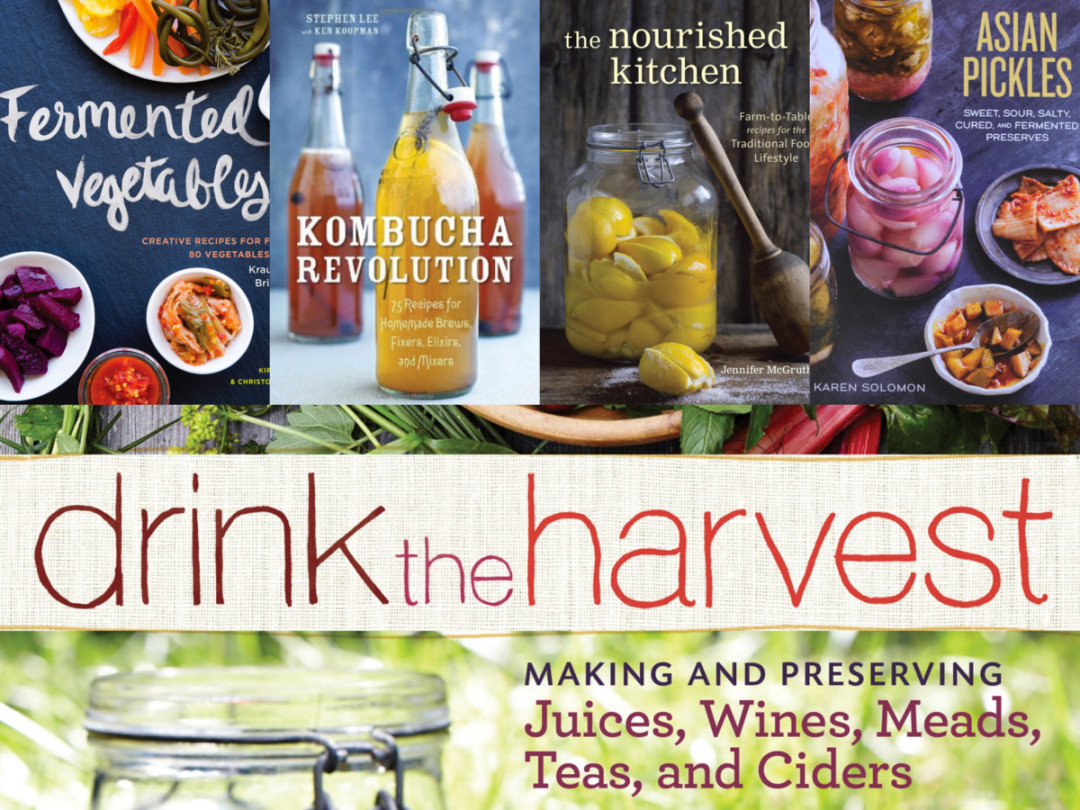READ EM AND EAT
Get Cultured with 3 Fresh Fermentation Guides
Join the 'Culture Wars' with a handful of new and upcoming cookbooks and turn your kitchen into a haven for beneficial bacteria.

Fermentation—one of the culinary buzzwords of 2014—is the topic of three new cookbooks, each of which approaches the practice from a unique angle:
- Karen Solomon’s Asian Pickles ($19.99; out June 10 from Ten Speed Press; 208 pages) aims at filling a gap she perceived in the literature on the fermentation craze. Motivated by her love of Asian flavors and unsatisfied by existing cookbooks on the subject, she set out to write a comprehensive guide to pickling in Eastern cultures: Japan, Korea, China, India, and across Southeast Asia.
- Nan Chase and DeNeice Guest see fermenting as an opportunity to make the most of seasonal harvests, to reduce waste in large crops and really extend the harvest season. The name of the game in Drink The Harvest ($18.95; out June 17 from Storey Publishing; 232 pages) is experimentation, and they stress throughout the book that these recipes are meant to inspire further creativity, that the possibilities are endless (and delicious). A third of the book is dedicated to the fermentation trend, with various recipes for wines, ciders, and meads.
- Oregon-based food writers Kirsten and Christopher Shockey’s Fermented Vegetables ($24.95; out September 2014 from Storey Publishing; 376 pages) is a hefty guide to the reemerging art of fermentation as an alternative to freezing or canning, as a superior culinary form that preserves both flavor and nutritional value. The book covers the broad range of possibilities offered by lactic-acid fermentation, the centuries-old practice that has brought us such cultural staples as sauerkraut and kimchi. This book is perfect for the fledgling fermentista—the name Christopher Shockey proudly invented to describe his trade. Fermented Vegetables is divided into four parts, beginning with the fundamentals of fermentation, moving gingerly into basic krauts and kimchi, followed by more adventurous section “Fermenting Vegetables A to Z,” ending with a section on how to use these fermented vegetables at every mealtime, even desserts and cocktails.
Want even more guidance? Try these new books for more preservation wisdom:
- Stephen Lee, the Portland-based tea tycoon behind Stash, Tazo, and Kombucha Wonder Drink, has channeled his passion for the fermented side of steeping with his new book, Kombucha Revolution: 75 Recipes for Homemade Brews, Elixirs, and Mixers. In the small-but-mighty tome, Lee demystifies the live beverage and offers dozens of new interesting ways to incorporate “the elixir of life” into the diets of both beginners and seasoned ‘booch-imbibers. Find our full review here.
- For a deep dive into traditional cooking methods beyond fermentation, explore blogger Jennifer Mcgruther's The Nourished Kitchen: Farm-To-Table Recipes for the Traditional Foods Lifestyle Featuring Bone Broths, Fermented Vegetables, Grass-Fed Meats. ($27.99; Ten Speed Press; 320 pages).
Have you tried fermenting at home? Tell us about your kitchen culturing successes (and fails!) in the comments below.




